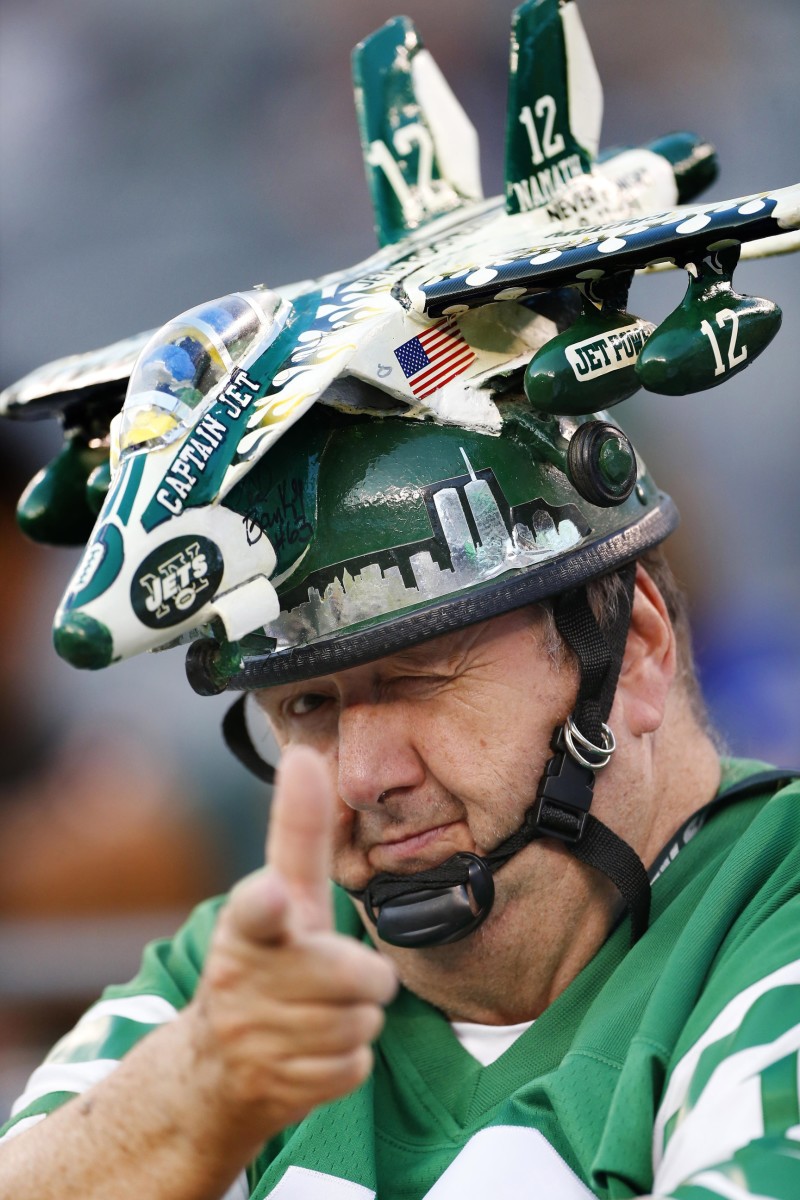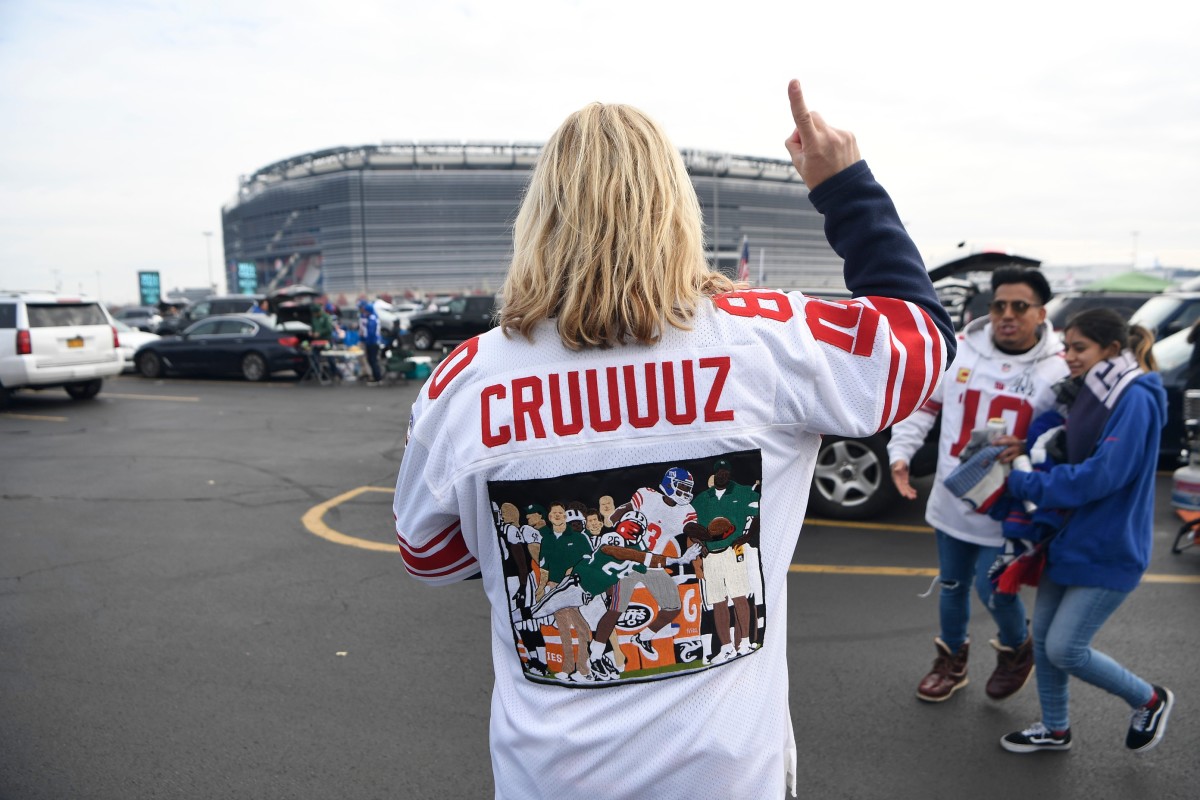No NFL fans at MetLife Stadium hurts more than just the New York Giants and the New York Jets
Perhaps no sport benefits more from its fans than the NFL, with crowd noise and momentum able to play a significant role in helping a home team. Conversely, perhaps no one is hurt more than the local communities surrounding an NFL stadium when fans are unable to attend games.
It has nothing to do with gameday atmosphere or the home team winning. No fans means many businesses, already negatively impacted by the global pandemic, will be dealt another blow.
A casualty of COVID-19 and social distancing restrictions, this fall, there won’t be any New York Giants or New York Jets fans at MetLife Stadium in East Rutherford, N.J. And while that is certainly a blow to the ownership of these two teams, who lose out on ticket sales, merchandising and concessions, it is also a difficult thing for the local towns and cities that generate significant revenue from NFL gamedays. Not to mention the people employed by MetLife Stadium on the operations end of gameday.
“It’s a boatload of money at a time when we need it and of course, the surrounding businesses feel it,” said former New Jersey Governor Dick Codey, now president of the state senate.
“And you’re dealing with 16 regular season games because you have two teams. It is a nice chunk of change at a time when we desperately need it. Consider what you pay for a beer at the stadium is in excess of what you would pay in a regular tavern – the higher the price, the more the tax. There are ancillary things too – the gas stations get business, this business gets some, that business gets some…”

The “boatload of money” in Codey’s Jersey parlance is the type of revenue that helps a town budget and keep local businesses chugging along. Dr. Bruce Mizrach, professor of economics at Rutgers, says that local businesses benefit from the 16 regular season NFL games played at MetLife with increased tourism and revenue brought in from fans who patronize everything from delis and liquor stores to gas stations. Comparing a typical gameday in the area surrounding the Meadowlands Sports Complex with a non-gameday paints a picture of an area that benefits from tens of thousands of fans patronizing local establishments for food and gas.
“On September 8, 2019, the Sunday of the Giants-Eagles game, there were 10,384 visits in the SafeGraph data to establishments in East Rutherford - taking out the MetLife visits,” said Dr. Mizrach, citing the SafeGraph technology that utilizes cell phone data. Dr. Mizrach said that “SafeGraph records data from 45 million cell phones, roughly one in seven phones.”
“On a non-MetLife event Sunday, pre-COVID, February 23, 2020, there were only 2,473 visitors to places in East Rutherford. Game days increase visits to local businesses by over 400 percent.”
Last month, the Jets and the Giants along with New Jersey governor Phil Murphy, announced in a joint statement that there will be no fans at games this fall. Some NFL teams have announced they will allow limited attendance this season.
The tristate region, which also includes Connecticut, was particularly hard hit during the first wave of the coronavirus. New York and New Jersey in particular are cautiously re-opening their economies, limiting certain activities such as dining and shopping to ensure social distancing requirements are met. A drop in cases related to the pandemic is helping this slow and cautious approach from Murphy.
MetLife Stadium is the only stadium currently home to two NFL teams. The New Jersey Sports and Exposition Authority (NJSEA) operates the facility.
Part of the sales pitch 15 years ago for the construction of a facility to replace Giants Stadium was that local businesses and communities would feel a positive economic impact from gameday fans. While that may be true, a year like this with no NFL is going to hurt towns that border the facility.
Perhaps no town more than East Rutherford, in whose borders the Meadowlands Sports Complex resides.
"The borough benefits from [the] hotel tax that is generated. Those numbers are down 75 percent right now. There may also be some court revenues due to arrests being made at the stadium," said Rutherford Mayor Jeffrey Lahullier.
"There are costs associated with game day to the borough also. We have traffic officers staged on the outer perimeter during game day. We also collect an annual PILOT payment from the NJSEA to help compensate for these expenditures - 21 percent of the total amount to be raised by taxes. Last year’s number was over $8 million dollars."
There certainly will be a trickle down effect on NFL teams in terms of their loss in revenue. Already, there is talk that the salary cap will be lowered next year to balance out the substantial loss in revenue that franchise ownerships are going to feel this year.
The impact of the fan restrictions extends beyond the teams and beyond the communities where Jets and Giants fans spend money. Opposing teams fans stay in hotels and make a weekend out of their team playing in the shadows of New York.
It isn’t uncommon to see opposing team fans flood New York City’s tourist traps in the days before and after a game at MetLife Stadium. Last year, Times Square in Manhattan was a sea of black and gold with hundreds upon thousands of Pittsburgh Steelers fans visiting the spot as part of a long weekend to see their team play. These fans buy souvenirs, eat local pizza and use mass transit – all activities which support the local economy.
But there is also the human cost involved as well. No fans at the games means that the hourly workers who do everything from security to concessions won’t be making that auxiliary income this year. A whole industry dependent on attendance evaporates with no fans allowed inside.

This includes local hotels that cater to fans traveling in for games and restaurants that see peak consumption on NFL Sundays.
“The NFL is a $15 billion a year industry and roughly one-third of that total is stadium revenues: tickets, parking, concessions, fan merchandise. Companies like Aramark and Delaware North employ over 200,000 workers in their sports venues, and the loss of fans across the NBA, MLB and NFL threatens these jobs,” Dr. Mizrach said.
“While fans love their teams, skeptics are right to question tax subsidies to teams and stadium that play only 10 home games per year. Local businesses like restaurants are actually in competition with the stadiums, and they generally do not benefit from game days. Hotels near MetLife stadium double their foot traffic on game days, but, unfortunately this is only 20 days per year (10 each for the Giants and Jets).
“The hotels in East Rutherford do benefit. Hotel stays in East Rutherford rise by 145 percent on game days. For the five major hotels in East Rutherford that is approximately 735 extra guests per night.”
Few understand the loss like Codey. As acting governor twice, he was influential in the construction of MetLife Stadium as well as the Prudential Center in nearby Newark and Red Bull Arena in Harrison. A big part of the sales pitch for those stadiums was the impact in terms of job creation and also the trickle down effect on bringing 80,000 people into the Meadowlands area on local businesses.
“You’re talking hundreds of people who work a game from security, people on the field and on and on…parking,” Codey said.
“There is a domino effect, a ripple effect with no games. People go to the same restaurants before or after so the state loses sales tax on meals. They’ll have to ride through it like everyone else.”
